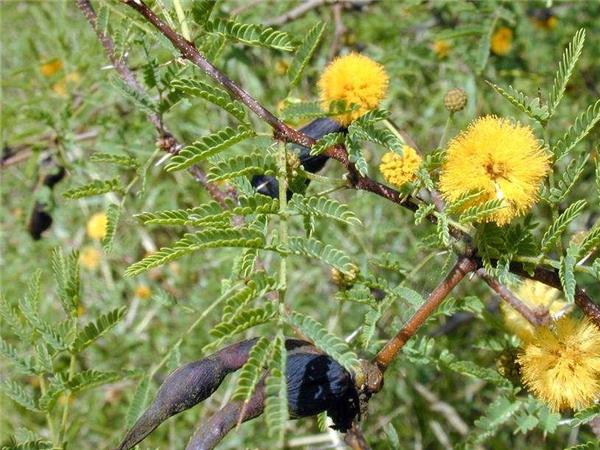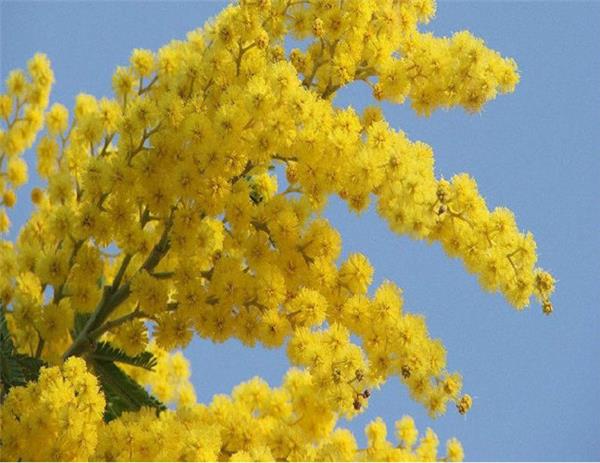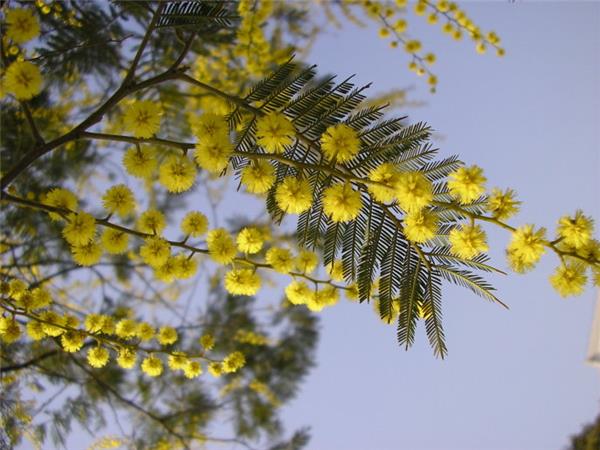Introduction of planting techniques and common varieties of acacia
Acacia is a kind of tree species with high ornamental value, which can often be seen on both sides of the road and in landscape design, so it is also very suitable for planting in the courtyard.

Planting techniques of Acacia
Seed quality: the 5-10-year-old dominant tree was selected as the mother plant, and the pods were collected when the pods changed from lavender to brown in late May. Spread out until the pods are cracked and get the seeds. The seed emergence rate of pods is about 20% 25%, 70000-80000 seeds / kg, and the germination rate is generally 60%-70%.
Nursery preparation: nursery land should choose to avoid the wind to the sun, no stagnant sandy loam or light loam paddy field is better, turn 15~20cm deeply, lack of fertility can apply appropriate amount of base fertilizer. In order to control underground pests, 3% furan granule 2~4kg/ mu was applied and rotary tillage was fine. It is suitable to divide the border at the distance of 1.4m to 1.6m, the height of the border is 25~35cm, the width of the border is 1mm 1.2m, the rake is flat and fine, and it is slightly shaped into the back of the tortoise. The bed surface is sprayed with 800 to 1000 times of dimethazone solution for sterilization and disinfection.
Seed treatment before sowing: there are two treatment methods: soaking seeds in hot water and blanching seeds in boiling water. Seed drying and disinfection are needed before treatment. Soak the seeds in 70 ℃ hot water and cool naturally to the next day. Take the dewaxed and swollen seeds, mix them with dry or wet sand and put them in a greenhouse of 25: 30 ℃ to accelerate germination and sow seeds. The remaining seeds were soaked in 80 ℃ hot water. Blanch the seeds in boiling water, wrap them loosely with gauze, boil them in boiling water for 15 minutes and 60 seconds, immediately rub them in warm water for 15 minutes, soak the seeds until the next day, dry and germinate, then sow the seeds.

Sowing: spring sowing from March to April and autumn sowing from late September to mid-October. Acacia seeds are solid and the seed coat is thick waxy, so soak the seeds with 60-80 ℃ hot water before sowing, cool naturally, change once a day, take out on the third day, mix with wet sand, pile up warm places, cover rice straw, sow after 7 days, and seedlings can emerge after 3-5 days.
Management: after the emergence of Acacia seedlings, when the seedling height is 3-5 meters, thin mature human feces and urine or chemical fertilizer should be applied once to promote the growth of seedlings. If the seedling height is more than 15 cm, the seedlings should be moved in cloudy or drizzle days, some branches and leaves should be cut off properly, and the plant should be planted in the prepared bed according to the row spacing of 10 × 30 cm. If there is a sunny day after transplanting, it should be watered and shaded to help the roots of the seedlings survive. After planting, it should be watered in time, then watered thoroughly, and sufficient base fertilizer should be applied at the end of autumn. For the annual weak seedlings or stem tilted albizzia, one strong bud can be left in the early spring of the following year and cut dry on the ground.
Diseases and insect pests: in order to prevent the harm of soil bacteria to seeds and seedlings and ensure the healthy growth of seedlings, when preparing nutritious soil and seedling bed, appropriate amount of insecticides, fungicides, micro-fertilizers and ferrous sulfate can be added for soil disinfection and acid adjustment.

Acacia is a common variety.
Acacia mandshurica: evergreen trees, generally about 10m high, origin as high as 30m; branchlets angled, green. The seedlings have pinnately compound leaves and then degenerate into leaflike stalks, falcate-lanceolate or falcate-oblong, long 10~20cm. Flowers orange-yellow, fragrant; spikes axillary, 3. 5~10cm. The pod curls into a ring when ripe. The flowering period is from July to August, the second flowering from October to December, and the fruiting period from December to May of the following year.
Acacia mangium: evergreen trees, up to 23m; branchlets angular. Petiole very large, long Obovate, both ends contracted, long 20~24cm, wide 7~12cm, with 4 parallel veins, leathery. Flowers yellowish, spikes axillary in pairs, long 3.5~8cm, pendulous. The pod is strip-shaped and curly. The flowering period is from June to July and the fruiting period is from August to December.
Bauhinia trees: evergreen trees, 5 to 20 m tall; bark dark gray, branchlets winged or conspicuously angular. Bipinnately compound, pinnae 8-15 pairs, pinnae with 30-40 pairs of leaflets, leaflets linear, long 4~12mm, dark green, glabrous or subglabrous; there is a gland between pinnae on the rachis. Flowers bright yellow and fragrant; compound corymbose inflorescences composed of heads. The flowering period is from January to April, and the fruiting period is May.
Black Bauhinia: very similar to Bauhinia in shape, the main difference is that its leaflets are dark green and glossy, and there are 1-2 glands between each pair of pinnae on the total leaf axis; the flowers are yellowish and the pods are densely tomentose. The florescence is from December to May of the following year.

This is the end of some relevant introduction about acacia planting technology. If you are not satisfied with this kind of tree species, you can also choose your favorite from the big-leaf acacia and green bauhinia introduced above. They all have a good effect of decorating the courtyard, and can also be cultivated as large-scale potted plants.
Related
- Wuhan Hospital Iron Tree Blooming Result Was Instantly Frightened by the Gardener Master
- Which variety of camellia is the most fragrant and best? Which one do you like best?
- What is the small blue coat, the breeding methods and matters needing attention of the succulent plant
- Dormancy time and maintenance management of succulent plants during dormancy
- Minas succulent how to raise, Minas succulent plant pictures
- What are the varieties of winter succulent plants
- How to raise succulent plants in twelve rolls? let's take a look at some experience of breeding twelve rolls.
- Attention should be paid to water control for succulent plants during dormant period (winter and summer)
- Watering experience of twelve rolls of succulent plants
- Techniques for fertilizing succulent plants. An article will let you know how to fertilize succulent plants.



